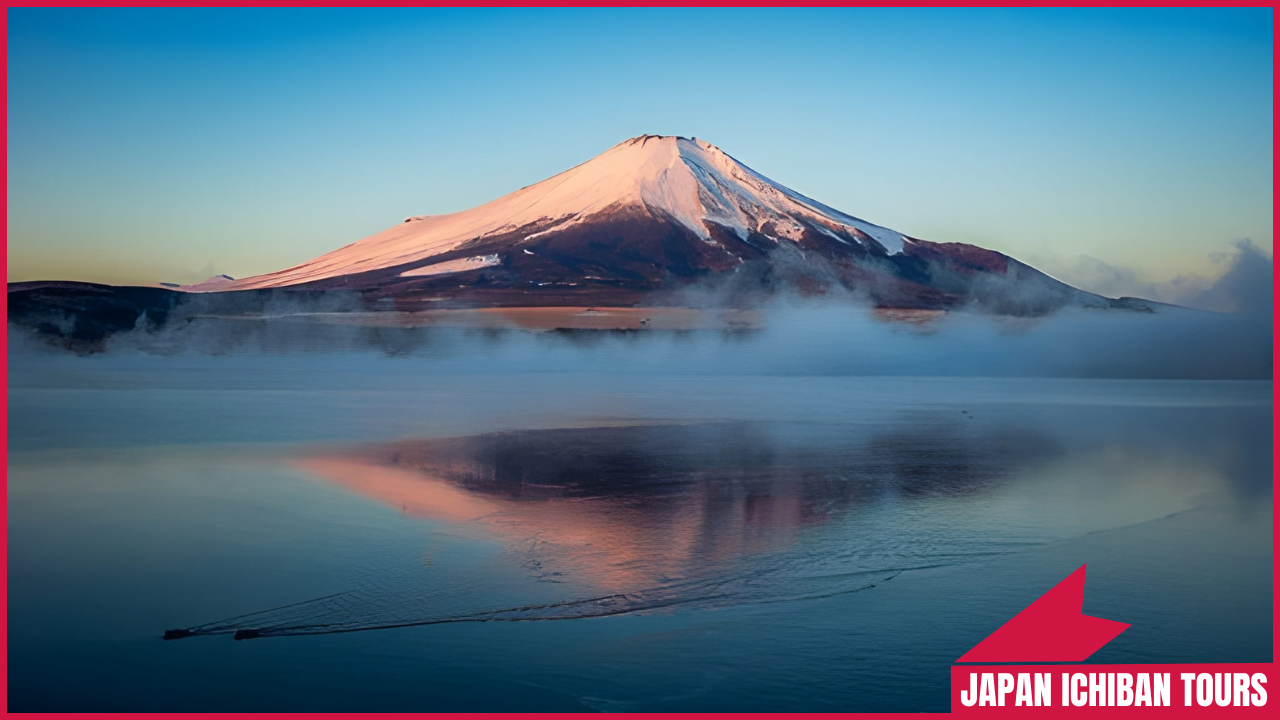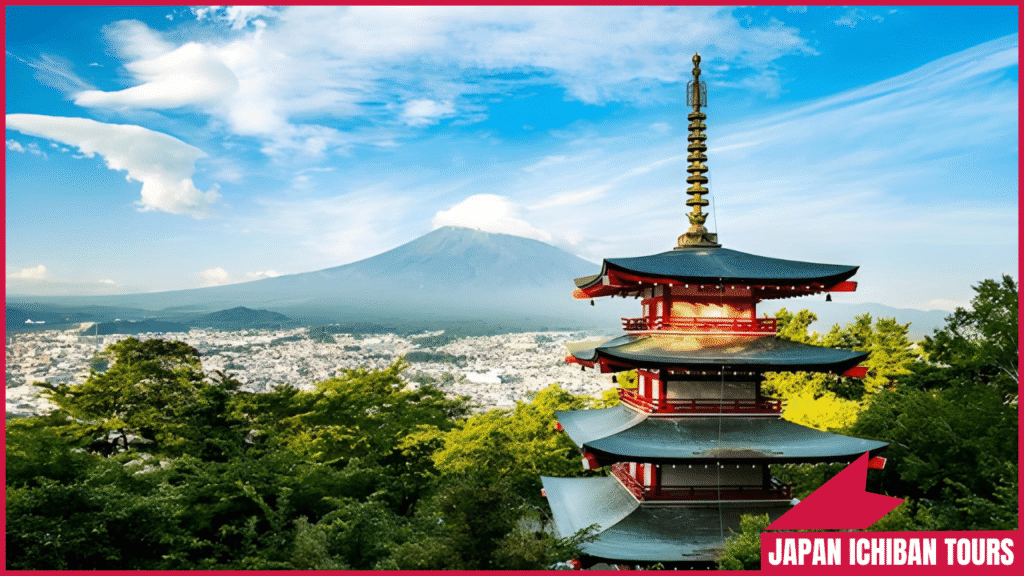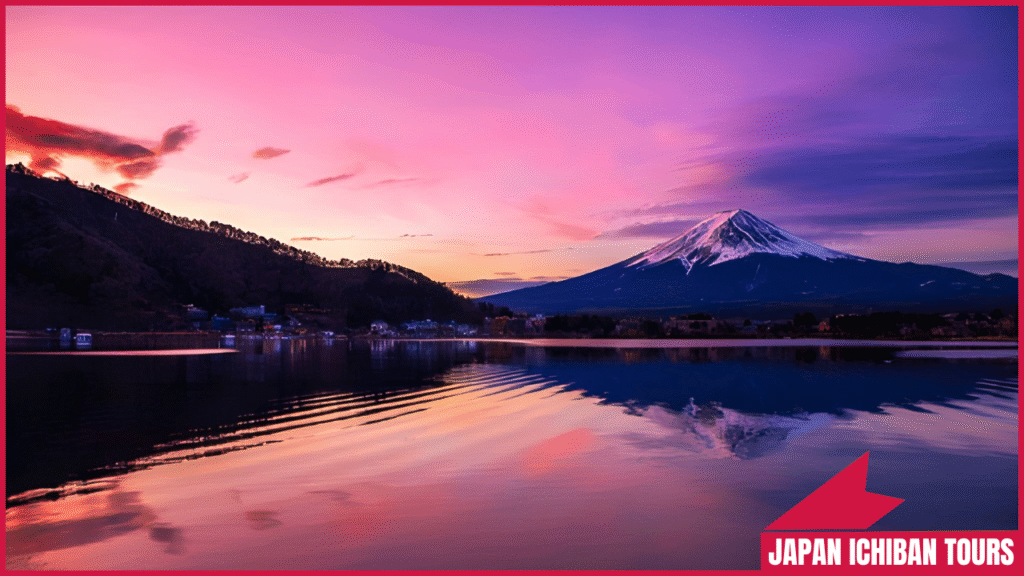
Mount Fuji, Japan’s iconic 3,776-meter volcano and UNESCO World Heritage site, remains a symbol of natural beauty and spiritual significance in 2025.
Surrounded by pristine lakes, hot springs, and historic trails, the area offers endless adventures, from serene hikes to thrilling amusement parks.
Whether you’re a first-time visitor or a seasoned explorer, this guide curates the best things to do around Mt. Fuji, blending timeless attractions with new 2025 updates like enhanced eco-tours and AR-enhanced viewpoints.
Plan your visit during shoulder seasons (spring or autumn) for clearer skies and fewer crowds, and remember the climbing season runs from early July to early September with new daily limits and fees to promote sustainability.Top Things to Do in Sapporo: Best Activities in 2025
In 2025, Mt. Fuji continues to draw millions, but with updated rules like a ¥2,000 entry fee during climbing season and daily hiker caps, the focus shifts to sustainable tourism. The surrounding Fuji Five Lakes region and Hakone area provide postcard-perfect views without the summit crowds. Expect innovations like AI-guided audio tours at the 5th Station and eco-friendly onsen experiences. From cherry blossom frames in spring to autumn foliage hikes, the area’s versatility makes it ideal for all travelers.
The Fuji Five Lakes (Fujigoko)—Kawaguchiko, Yamanakako, Saiko, Shojiko, and Motosuko—offer stunning reflections of Mt. Fuji. Lake Kawaguchiko, the most accessible, is perfect for a leisurely day. Rent a bike (~$10) to circle the lake or cruise on a sightseeing boat (~$15) for panoramic views.
The five-story Chureito Pagoda at Arakura Sengen Shrine provides one of the most photographed views of Mt. Fuji, with 398 torii gates leading up. The 400-step climb rewards with Fuji framed by red gates and seasonal flowers.
| Viewpoint | Location | Access | Best Season | Cost |
|---|---|---|---|---|
| Fuji Five Lakes | Yamanashi Prefecture | Train/bus from Tokyo (~2 hrs) | Summer/Autumn | Free–$15 |
| Chureito Pagoda | Fujiyoshida | Train from Tokyo (~1.5 hrs) | Spring | Free |
The Fuji Subaru Line 5th Station, at 2,305 meters, is the starting point for the popular Yoshida Trail. In 2025, expect AR apps for virtual trail guides and eco-huts with solar power. Hike the 1-hour loop trail for views without committing to a full climb.
Hakone, 1.5 hours from Tokyo, offers the Hakone Ropeway (~$15) for aerial Fuji views over volcanic valleys. For thrill-seekers, paragliding tandem flights (~$100) soar above Lake Ashi with Fuji in the backdrop.
Lake Yamanaka, the largest Fuji Lake, is ideal for cycling (~$15 rental) or kayaking (~$20/hour). Pedal 20 km around the lake for Fuji reflections, or paddle at dawn for misty serenity.

This sacred Shinto shrine in Fujinomiya honors Mt. Fuji as a deity. Climb the 397 torii gates to the main hall for blessings and Fuji views. In 2025, cultural workshops on Fuji folklore are available (~$10).
At Fuji’s northwest base, Aokigahara’s dense forest offers mystical hikes (guided tours ~$30 to avoid getting lost). Known for its lava caves like Wind Cave (~$5), it’s a UNESCO site blending nature and geology.
This 150-meter-wide veil-like waterfall cascades from Fuji’s slopes, creating a misty spectacle. A short hike (20 minutes) leads to viewing platforms.
| Cultural Site | Location | Access | Best Season | Cost |
|---|---|---|---|---|
| Sengen Taisha | Fujinomiya | Train (~2 hrs from Tokyo) | Spring | Free |
| Aokigahara Forest | Yamanakako | Bus (~2.5 hrs from Tokyo) | Autumn | $5–$30 |
| Shiraito Falls | Fujinomiya | Train/bus (~2 hrs) | Winter | Free |
Near Fuji, try hoto—thick udon in miso soup with pumpkin and mushrooms (~$10). It’s a warming winter dish at local eateries like Hoto Fudo.
Oshino Hakkai’s eight crystal-clear ponds, fed by Fuji’s snowmelt, surround farm-to-table restaurants serving trout sashimi (~$15). In 2025, new eco-menus highlight sustainable fishing.
Yamanashi’s apple orchards offer picking seasons (September–November, ~$10/basket). Fresh-picked apples make ideal souvenirs.
Hakone’s geothermal onsen, like Owakudani’s volcanic baths (~$15), provide Fuji views from rotenburo (outdoor tubs). 2025 sees new gender-neutral options for couples.
Fuji-view retreats at Lake Saiko offer sunrise yoga (~$20/session) amid serene forests. New in 2025: mindfulness apps integrated with AR Fuji visualizations.
Thrill-seekers love Fuji-Q’s record-breaking coasters like Fujiyama (~$60 entry). In 2025, new VR rides simulate Fuji climbs.
Winter activities at Lake Kawaguchiko include skating rinks (~$10) and guided snowshoe tours (~$30) around Fuji’s base.
| Adventure Option | Location | Cost | Best Season | For Whom |
|---|---|---|---|---|
| Fuji-Q Highland | Fujiyoshida | $60 | Year-round | Thrill-seekers |
| Snowshoeing | Kawaguchiko | $30 | Winter | Families |

Spring (March–May) for cherry blossoms; summer (June–August) for hiking; autumn (September–November) for foliage; winter (December–February) for snow sports. Avoid rainy season (June–July) for clearer views.
From Tokyo, take the JR Chuo Line to Kawaguchiko (~2 hours, ~$20) or bus (~2.5 hours, ~$25). Shinkansen to Mishima (~1 hour, ~$50) for southern access.
Lake Kawaguchiko ryokans (~$100–$200/night) offer Fuji views; budget hostels (~$30–$50) in Fujiyoshida. 2025 sees new glamping sites (~$80) with hot tubs.
Mt. Fuji is safe, but prepare for altitude sickness on hikes (carry water, acclimate slowly). Respect no-trace rules; new 2025 bins encourage eco-practices.
The best things to do around Mt. Fuji in 2025 blend adventure, culture, and relaxation, from Fuji Five Lakes viewpoints to Hakone onsen. Whether hiking trails or savoring hoto noodles, Fuji’s magic captivates year-round. Plan with these tips for an epic Japan escape.
What’s the best viewpoint of Mt. Fuji?
Chureito Pagoda offers the most iconic framed view, especially in spring with cherry blossoms.
Can I climb Mt. Fuji in 2025?
Yes, from early July to early September, but with new fees (¥2,000) and hiker limits for safety.
How do I get to Mt. Fuji from Tokyo?
Take the JR Chuo Line to Kawaguchiko (~2 hours, ~$20) for northern access.
What’s a must-try food near Mt. Fuji?
Hoto noodles (~$10), a warming miso-udon dish in Yamanashi.
Is Mt. Fuji visible year-round?
Best in winter and autumn; rainy season (June–July) often clouds it—check forecasts.

Discover Japan Like Never Before 🇯🇵








Copyright © 2025 Japan Ichiban Tours | made with ❤️ by ideavire.com
Please select a template first

1 Comment
Skin Whitening in Japan: Traditions, Products & Culture in 2025 · October 7, 2025 at 6:55 pm
[…] This guide delves into the historical significance, popular products, and contemporary cultural perspectives, highlighting how Japan balances ancient ideals with modern science for healthy, even-toned complexions. Best Things to Do Around Mt. Fuji in 2025 at Japan […]